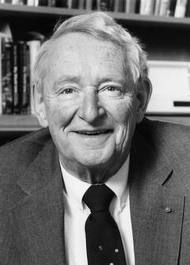Edward P. Ney | |
|---|---|
 Photo provided by Frank B. McDonald | |
| Born | October 28, 1920 |
| Died | July 9, 1996 (aged 75) Minneapolis, Minnesota |
| Nationality | American |
| Alma mater | University of Virginia |
| Scientific career | |
| Fields | Physics Astronomy |
| Institutions | University of Minnesota University of Virginia |
| Doctoral advisor | Jesse Beams |
| Doctoral students | Phyllis S. Freier John D. Linsley Frank B. McDonald |
Edward Purdy Ney (October 28, 1920 – July 9, 1996) was an American physicist who made major contributions to cosmic ray research, atmospheric physics, heliophysics, and infrared astronomy.[1] He was a discoverer of cosmic ray heavy nuclei and of solar proton events. He pioneered the use of high-altitude balloons for scientific investigations and helped to develop procedures and equipment that underlie modern scientific ballooning. He was one of the first researchers to put experiments aboard spacecraft.
In 1963, Ney became one of the first infrared astronomers. He founded O'Brien Observatory, where he and his colleagues discovered that certain stars are surrounded by grains of carbon and silicate minerals and established that these grains, from which planets are formed, are ubiquitous in circumstellar winds and regions of star formation.